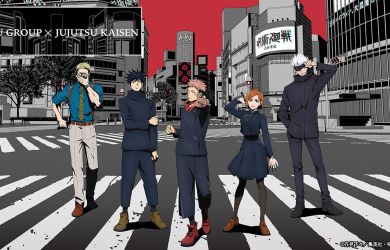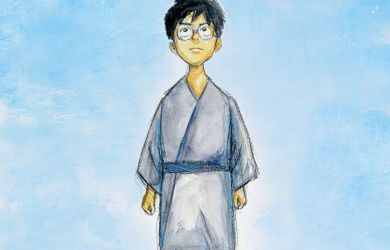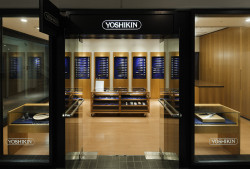
Originally published on metropolis.co.jp on September 2010

© Damien Bouchard - Fotolia.com
Tweeting priests and YouTube videos of meditating monks have made Zen Buddhism more accessible than ever. At the same time, our lightning-speed lifestyles not only beg a moment’s pause—they may also be more conducive to practicing Zen.
“These days, we work more efficiently, we have more free time, and work is not as physically tiresome as it used to be,” says Gerhard Wolfram, a student of Zen since 1996. “This is a great advantage. Hundreds of years ago it would have been necessary to join a temple. But living in a city, there are teachers and places to practice.”
By practice, Wolfram means zazen, literally “seated meditation.” While this cornerstone of Zen Buddhism can technically be done anywhere, a teacher is crucial for getting started and separating authentic experience from attractive illusion.
Most Tokyo temples are not so much flummoxed by foreign faces as they are uncomfortable with the potential language barrier. Buddhist group Dogen Sangha, where Wolfram is now a teacher, is noteworthy for offering instruction in English. Their Saturday zazen sessions include 30 minutes of meditation followed by an hour-long lecture on Soto school Zen teachings.
A quick bit of history: Soto is one of the two main schools of Zen Buddhism, the other being Rinzai. While the former was traditionally (though not necessarily accurately) associated with common folk and the latter with the samurai class, for beginners the greatest difference between the two is likely to be the sitting style. Soto meditators face the wall, while their Rinzai counterparts face the center of the room.
“Zen needs to be experienced first,” says Wolfram. “In sitting, you reach a sense of balance. When you return to daily life, you encounter troubles that can throw off your balance. However, the more you practice, the less these things throw you off.”
The soft-spoken German, who works as a financial controller, says that one of his earliest stumbling blocks was his own goal-oriented personality: “You continue to sit, but it is still painful and nothing happens. ‘How do I see that I’m making progress?’ I asked, but the teacher didn’t answer.” Now, speaking from experience, he says he feels “not so much an achievement as a coming back to an original state.”
American Zen priest Brad Warner, an author of several books on Buddhism and pop culture, adds: “Buddhism is too often lumped in with a lot of New Age nonsense and seen as another escape from reality into some sort of mystical trance state. Buddhism is actually realism. It’s not mysticism and it’s not religion.”
Souin Fujio would probably concur with this. The Zen priest was born into a temple family and has been practicing zazen since before he can remember. “When I was a very young age, it had already become part of my life, like brushing my teeth and washing my face.” This is the goal, he explains: to make meditation a part of daily life—cleaning the mind the way one cleans one’s teeth.
Starting this year, Fujio has begun holding quarterly zazen sessions in English at Kencho-ji in Kamakura. This historic Rinzai temple, built in 1253, was Japan’s first Zen monastery and is home to a number of Important Cultural Properties. The beginner-friendly, 90-minute program includes three 15-20 minute meditation sittings interspersed with breaks for leg stretching, followed by a question and answer session with the English-speaking priest. Chairs are available for those who need them.
Fujio hopes participants can come away with the basics: breathing techniques and correct posture. “A straight back leads to good body balance. Medically speaking, this means lower blood pressure and improved circulation,” he explains. “After such deep breathing, the mind is refreshed and the mental condition is improved.”
Dogen Sangha meets at the Young Buddhists Association at Tokyo University: 2F Hongo Bldg, 3-33-5 Hongo, Bunkyo-ku. Tel: 03-3813-5903. Nearest stn: Hongo Sanchome. www.dogensangha.org
Kencho-ji will host zazen in English from 1:30-3pm (arrive at 1pm), Sep 8 and Dec 15. ¥1,000 plus temple entrance. See website for registration details. Kencho-ji Ryoden, 8 Yamanouchi, Kamakura-shi. Tel: 0467-22-0981. Nearest stn: Kita Kamakura. www.kenchoji.com
The following temples in the Tokyo area also welcome international students. First-timers are advised to arrive at least 20 minutes early for introductory instruction.
- Rinsen-ji: 4-7-2 Kohinata, Bunkyo-ku. Tel: 03-3943-0605. Nearest stn: Myougadani. http://homepage3.nifty.com/zazen/english.htm
- Seisho-ji: 2-4-7 Atago, Minato-ku. Tel: 03-3431-3514. Nearest stn: Kamiyacho. www5.ocn.ne.jp/~seishoji
- Tosho-ji International Zen Center: 4-5-18 Yutaka-cho, Shinagawa-ku. Tel: 03-3781-4235. Nearest stn: Togoshikoen (Tokyu-Oimachi line). http://homepage3.nifty.com/toshoji







